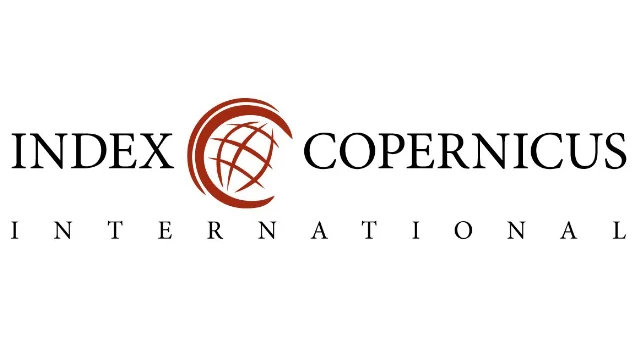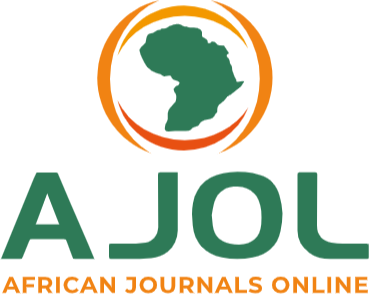AN INTEGRATED APPROACH TO PETROLEUM EXPLORATION IN THE EASTERN COASTAL SWAMP DEPOBELT OF THE NIGER DELTA BASIN, NIGERIA.
Keywords:
Sequence, stratigraphic framework, Structural configuration, Reservoir distribution, Coastal Swamp DepobeltAbstract
Communications in Physical Sciences Vol. 2. No. 1, 35-49. (2017)
Authors: Chidozie Izuchukwu Princeton DIM., K. Mosto ONUOHA and Chukwudike Gabriel OKEUGO
Sequence stratigraphic, structural and reservoir analytical tools have been employed in interpreting the geology of the eastern Coastal Swamp Depobelt of the Niger Delta Basin. The aim was to understand the stratigraphic framework, structural styles and hydrocarbon reservoir distribution for improved regional hydrocarbon exploration across the onshore Niger Delta basin. This interpretative study made use of well logs, biostratigraphic (biofacies and bio-zonation) and petrophysical data obtained from twenty wellbores, integrated with recently merged and reprocessed 3D regional seismic volume spanning across eight fields. Results reveal the occurrence of nine key chronostratigraphic surfaces (five maximum flooding surfaces and four sequence boundaries) that were tied to well-established pollen and foram bio-zones for high resolution sequence stratigraphic interpretation. The sediment stacking patterns recognized from gamma ray log signatures were used in delineating the lowstand system tract (LST), transgressive system tract (TST) and highstand system tract (HST) genetic units. Well log sequence stratigraphic correlation reveals that stratal packages within the area were segmented into three depositional sequences occurring from middle to late Miocene age. Furthermore, there is thickening of stratal packages with corresponding decrease in net-to-gross thickness from north to south (basinwards). This is due possibly to the influence of syn-depositional structures on stratigraphy. The combination of reservoir sands (of LST and HST), source and seal shales (of TST and HST) and fault structures allows for good hydrocarbon accumulation and should be targeted during exploration. Reservoir evaluation studies using petrophysical parameters indicate the presence of good quality reservoir intervals, which are laterally continuous across several fields and partly compartmentalized within individual fields. Structural top maps of reservoirs show good amplitude response that are stratigraphically and structurally controlled. Structural analysis revealed the occurrence of back-to-back faulting, collapsed crest structures, simple/faulted rollovers, regional foot wall and hanging wall closures and sub-detachment structures. These structural styles constitute the major hydrocarbon entrapment mechanism in the area. Overall, the study has unraveled the existence of undrilled hydrocarbon leads at deeper depths that should be further revalidated for development.
Downloads
Published
Issue
Section
Similar Articles
- Oyebola Olusola Olurotimi, Belewu Fatai Damilola, Balogun Rilwan Oluwanishola,, Adegboyega Anthony Babajide, Oyebode Daniel Oluwatimilehin, Exploring the Thermoelectric Potential of Trigonal MgS2: A Computational Investigation Using DFT and Boltzmann Transport Theory , Communication In Physical Sciences: Vol. 11 No. 2 (2024): VOLUME 11 ISSUE 2
- Bright Adinchezo Adimoha , James Nwawuike Nnadi, Bright Okore Osu, Franca Amaka Nwafor, A Mixed Boundary Value Problem for a Finite Isotropic Wedge Under Antiplane Deformation , Communication In Physical Sciences: Vol. 11 No. 4 (2024): VOLUME 11 ISSUE 4
- Bright Adinchezo Adimoha , James Nwawuike Nnadi, Bright Okore Osu, Franca Amaka Nwafor, A Mixed Boundary Value Problem for a Finite Isotropic Wedge Under Antiplane Deformation , Communication In Physical Sciences: Vol. 11 No. 4 (2024): VOLUME 11 ISSUE 4
- Mumini Itopa Abdulazeez, Habeeb Ayoola Ayinla, Jeremiah Ayok , Goodness Abraham, Zulaihat Jummai Sanni, Organic Petrographic Characterization and Paleodepositional Environment of Potential Source Rocks in the Patti Formation, Bida Basin, Nigeria , Communication In Physical Sciences: Vol. 12 No. 4 (2025): VOLUME1 2 ISSUE 4
- Elizabeth C. Nwaokorongwu, Dual Solution Synthesis and Characterization of Sns:Zns Alloyed Thin Films and Possible Applications in Solar Systems and Others , Communication In Physical Sciences: Vol. 9 No. 2 (2023): VOLUME 9 ISSUE 2
- Ola-Buraimo Abdulrazaq Olatunji, Meshack Blessing Hosea, Foraminifera and Sequence Stratigraphy Study of the Early Maastrichtian to Paleocene Sediments of Kalambaina Formation, Sokoto Basin, Borth western Nigeria , Communication In Physical Sciences: Vol. 11 No. 4 (2024): VOLUME 11 ISSUE 4
- Ola-Buraimo Abdulrazaq Olatunji., Meshack Blessing Hosea, Foraminifera and Sequence Stratigraphy Study of the Early Maastrichtian to Paleocene Sediments of Kalambaina Formation, Sokoto Basin, Borth western Nigeria , Communication In Physical Sciences: Vol. 11 No. 4 (2024): VOLUME 11 ISSUE 4
- Mu’awiya Baba Aminu, Andrew Nanfa, Godwin Okumagbe Aigbadon, Simon Dalom Christopher, Idoko Eleojo Friday, Andarawus Yohanna, Abdulbariu Ibrahim, Sadiq Mohammed Salisu, Pam Dajack Dung, Francisco Sokin Paca, Simeon Tobias, Geology, Geochemical and Petrographic Studies of Lokoja Sandstone Facies: Implications on Source Area Weathering, Provenance and Tectonic Settings , Communication In Physical Sciences: Vol. 9 No. 4 (2023): VOLUME 9 ISSUE 4
- Abdulmuahymin Abiola Sanusi, Sani Ibrahim Doguwa, Abubakar Yahaya, Yakubu Mamman Baraya, Topp Leone Exponential – Generalized Inverted Exponential Distribution Properties and Application , Communication In Physical Sciences: Vol. 8 No. 4 (2022): VOLUME 8 ISSUE 4
- Emmanuel Wilfred Okereke, Sunday Ngozi Gideon, Kingsley Uchendu, Statistical Properties and Application of Bagui-Liu-Zhang Distribution , Communication In Physical Sciences: Vol. 8 No. 3 (2022): VOLUME 8 ISSUE 3
You may also start an advanced similarity search for this article.




